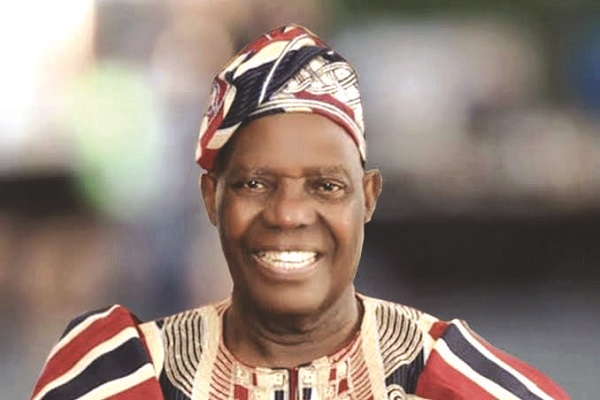A Critique Of Bisi Akande’s ‘My Participations’
‘The Man who looks history in the face’ is the title Professor Wole Soyinka put on the Foreword. Of course, “the man” here is Bisi Akande, the author of ‘My Participations’, an autobiography that is roiling calm across Nigeria. Soyinka endorses the book and the content in an eleven-page Foreword.
The Nobel Laureate says Akande, with the book, looked history in the face. And what is history? A narrative account of real past events (Bill Nasson). We encounter different, competing, even contrasting accounts of the past every day. When we resolve the puzzle and blow the chaff out of the bowl of grains, we get to the truth called history.
Now, what does it mean to look someone or something in the face? Collins English Dictionary says it means: “to look at someone directly in order to convince them that what you are saying is true, even though you may be lying.” So, did Akande truly glare at history and make claims seeking history’s validation?
Let us start from the history of this book itself. When was Bisi Akande’s ‘My Participations’ published? If you are surprised that I asked that question, it means you have not seen the Copyright page of the book launched on Thursday, December 9, 2021. On the book’s page ii, there is the claim from the publishers that it was “published in November 2020” and that its “first reprint” was done in “December 2021.”
The author himself signed off on the book’s Preface on Thursday, 28th May, 2020 after tracing the book’s history from May 6, 2014, through August 2017 and January 2018 when he said the first draft of 1,200 pages was ready. Now, if the book was truly published a year and a month ago, why are we just hearing of it and who in this world has a copy of that first edition? What this first encounter tells readers is to expect a lot of puzzling claims going forward.
The entire book smells of war; each chapter a battle, or a string of battles, or a continuation of an unfinished battle. As a child, Akande says he loved trouble; as an adult in politics, he fought fellow politicians; as governor, he fought labour activists, he fought the press, he fought traditional rulers (he records and names an oba as having begged for a car and he “secretly” gave him money to buy one; then he abused the king because the latter spoke ill of him).
Akande comes across in the book as every inch a warrior. This is hardly surprising given what he records as his possible mission on earth. At least a chapter speaks on what the author thinks was the reason for his birth: He was told that he was the reincarnation of his warrior great grandfather, a commander during the Yoruba wars of the 19th Century. He was shown war relics from his great grandfather, including dresses “decorated with fearsome amulets” which an uncle said were being kept as Akande’s inheritance for his use in future wars.
He appears to believe this and it shows in his readiness to fight all wars, including the very unnecessary. He writes: “That created in my mind the impression that I was likely going to end up as a warrior. All these had an effect on me. As a young boy, I was foolhardily bold. Among my peers, I always wanted to be in front in every troublesome exploit…” (page 50).
Akande comes across in the book as an excellent, even dangerous, keeper of private and official records. This shows clearly in the very lucid chapter where he discusses his tempestuous years as governor of Osun State. He quotes dates and time; he cites receipt numbers, claim forms and references other details that would easily escape the fingers of anyone who was not preparing for war in times of peace.
Akande sensationally put in the book an “Osun State Government General Claim Form Ref. AG/PV2//Dec/94 together with a duly signed Payment Voucher Sub-Receipt dated 21/12/94 by four labour union leaders” as bribe in exchange for peace with the reigning military government (page 293).
You encounter such lurid accounts from page to page until his ship hits the harbour. He justifies the mass sack of Osun State civil servants and teachers. He says his government “discovered that instead of 23,000, only 12,000 public servants were needed for the efficient service of Osun State” (page 308), and that the state “needed 4,468 teachers” for its 303 secondary schools “as against 7,257 on the payroll…” (page 309).
His accounts of how and why he sacked hundreds of workers and fought the labour force in the state will almost make even victims of his policies to tell him sorry. Then he waxes lyrical and concludes that chapter with a strange claim that as he “began to trim the main civil service” and reduced the agencies of government from 43 to 34, “there were loud complaints and labour uproar but there was a big relief…And there came labour peace from then on during my tenure.” This claim of peace is not true. The truth that is recorded in history is that all Osun State workers were on strike in the last four months of Akande’s government. He lost his re-election to that crisis and associated ones.
If Akande is at his very best element in robustly discussing his town and family histories (page 23 – 54), and defending the policies of his government (page 287-311), his adjectival allusions and direct word choices on politics and politicians make his objectivity suspect. His description of persons and events are positive or negative depending on how close the objects are to him. I read some pages and shivered; I felt he wantonly fed his enemies to the lions of rhetorical banditry. Chief Ayo Adebanjo’s case is the locus classicus here. The old man has made a very strong rebuttal complete with a challenge to Akande. The warrior from Ila Orangun has not responded.
Respect for truth is an inviolable rule if you are writing history. In fiction, you can invert truth and rearrange facts to suit your purpose. But what did not happen in the past cannot be the history of that past. Akande writes on page 220 that on a Saturday morning in August, 1988, the Awolowo political family met in Ikenne, in Awo’s Efunyela Hall. He then insinuates that a power tussle ensued there.
Akande writes: “Mrs Awolowo was getting ready to preside and was seated in the chairperson’s seat when Papa Ajasin came in. Papa Ajasin confronted her. ‘You have to leave that chair,’ he told her. ‘That is my chair!’ Akande adds that “Mama had to leave the chair for Ajasin…”
A professor friend who is well grounded in Awolowo/Afenifere matters discussed this part of the book with me. He was (and is) sufficiently close to all key participants at that meeting and was sure that what Akande described did not happen. He then asked me: “Read that quotation credited to Pa Ajasin again, does that sound like what the Ajasin we all knew could say?” I said No. Papa Ajasin had decorum, he wouldn’t utter those words, not even in his own house.
There is a storm too on the history and status of Afenifere. Akande writes on page 223 that “From all records, Awolowo never founded Afenifere as a cultural organization in his lifetime. Afenifere was formed as a cultural organization in Chief Bola Ige’s Bodija home in Ibadan in 1993…” Chief Akande may need to explain what he meant by “Afenifere as a cultural organization.” No one, now and in the past, has ever described Afenifere as “a cultural organization.” In the media, its popular description is ‘socio-political organization.’
There was a political party called the Action Group founded by Chief Obafemi Awolowo in 1951. On the party’s membership card, in the West, its name was written as ‘Egbe Afenifere’ with ‘Action Group’ in parenthesis. It was with that name the AG played its politics, contested elections, won and ruled the West till sometime in 1962 when the scissors of feudal powers shredded its unity. But it did not really die until the military came and killed democracy with the political parties.
Now, if that political organization founded by Awolowo in 1951 was ‘revived’ in 1993 and it adopted its old Yoruba sobriquet of Afenifere, would it be right for Akande to say the new host was the author and finisher of that undying group simply because the revival event held in his house?
Akande’s account of the politics of the All Progressives Congress (APC), its 2015 victory and its principal actors is interesting to read. He says his party in 2015 trounced the then ruling party by dominating “the political space with unseen political propaganda” (page 485). He has great words for the leaders of the party. Buhari, according to Akande (page 496), is “a soldier of steely resolve and profound patriotism.” On Bola Tinubu, Akande says that the former Lagos governor is a man of great wit who has refused to give up on him. “He always makes me feel resolutely pampered…” (page 421).
The book is a treasure trove of information on the APC and its politics. Strangely, I cannot see in the 559-page book a chapter or, even a paragraph, on the performance of the APC federal government. Maybe I missed it while reading.
Soyinka, in the Foreword, says that history “is a product of disciplined research” which “involves seeking primary sources, which are the closest handmaidens to Truth.” When witnesses to an event, or participants in it, create documents and other materials to guide further recollection of what happened, they are said to be creators of primary sources of history.
The strength of these sources, however, lies in how impassioned the creators were while moulding them. The tragedy is that when politicians and other people of power write history, they front-load their interest into its existence and that often pollutes the air around the creation.
Here, again, Soyinka’s words in the Foreword are useful. He says that “power hates truth” and that “power engages in image-making, image burnishing, credit hustling, (and) indeed, image fabrication…” That is a shot which could hit anyone, including Akande himself, his friends and his foes because all politicians do what Soyinka states here.
Fortunately, our history is never what John Burrow, in his ‘History of Histories’, describes as “a single grand narrative with the present as its terminus.” History itself has proven from Herodotus to now that its frontier is a perpetually shifting horizon. The more we move forward, the newer and bluer the skies we see.
The usefulness of Akande’s ‘My Participations’ is already seen in the various versions of history coming out to challenge his narrative. Without the old man’s effort, other emerging accounts would have remained idly latent with our history being the poorer for it.
Life is a narrative with plot strands that are eventually harnessed and resolved one way or the other. Life’s denouement is death. Akande’s book mirrors life and its linear plot structure. It opens with tales of Akande’s birth and his tentative steps as a child; it ends with the mournful account of his wife’s death and burial with a grieving gathering of friends and foes. Despite its shortcomings, ‘My Participations’ is a complete book, a valuable addition to the lengthening list of chronicles of how we arrived at today’s dankness.

































